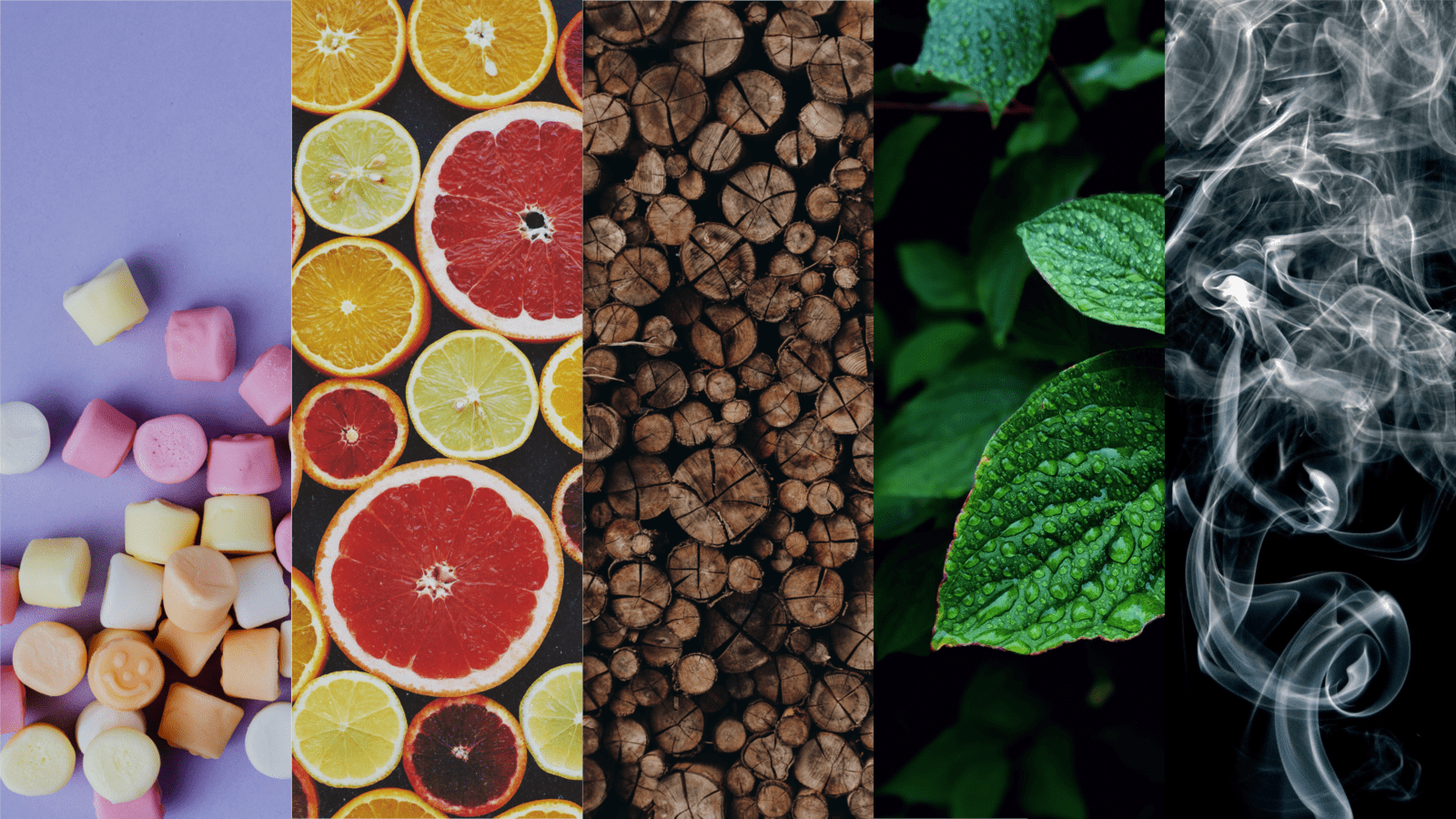While the human brain has 40million different olfactory receptor neurons which can be triggered by different scents, and we are able to distinguish around 10,000 different kinds of odours, it is likely that most of us group smells into broad categories. In fact, a US study carried out in 2013 suggested that there were only 10 different categories of scents we actively recognize, and three of them, namely pungent, decayed and chemical, are not particularly pleasant.
The others, however, such as fragrant, woody and citrusy are smells we often encounter in our day to day lives, and each can have very specific uses and applications, especially in marketing.
Below is a list of five common scents as well and their most common applications.
1. Citrus (and fruity)
Citrus and fruity smells are largely associated with cleanliness and comfort as well as festivities, especially when thinking about orange-based scents. Common uses of citrus smells include their inclusion in cleaning products both for personal care and for the home. As a result, the scent of lemons is likely very familiar in settings where one would buy such products. But that is not their only application.
Citrus scents are also known to uplift mood and reduce anxiety, making them a very popular choice for medical settings. Doctor’s and dentist’s offices and even physical therapy facilities are likely to employ a gentle citrus scent to encourage patients and visitors to feel relaxed and at home.
2. Woody
Woody scents can range from the standard smell of freshly cut wood to sophisticated perfumes with a complex profile including cedar or sandalwood among others.
Because of this, woody scents can have applications from the mundane to the very classy. Two of the best examples which capture both sides of the spectrum are DIY stores and high-end hotels.
For DIY stores, the smell of freshly cut wood is not only pleasant, encouraging a longer stay in the store, but also evokes associations with building and home improvement, therefore likely solidifying the trust customers place in the store and brand.
A similar effect is conjured by the use of complex woody smells in hotels. The Sheraton, for example, employs a signature scent including moss and musk intended to ground guests while also elevating their senses. It is possible that this scent is often chosen as it is likely to be inoffensive to most individuals while still being recognized as refined.
3. Sweet
While “sweet” is a broad category, it does encompass the scent of chocolate, confectionaries and similar sugary treats, and its application is straightforward. Customers are most likely to smell sweet scents in and around cafes and restaurants, as well as stores or shop aisles that sell treats. Unsurprisingly, smelling sweet treats can increase appetite and encourage customers to buy the products in question regardless of how recently they have had a meal.
4. Fragrant
For the purposes of this article, fragrant refers to pleasant floral smells, found in most common perfumes. This scent is, of course, most popular for use in perfume stores but it is also generally associated with feminine qualities. As a result, it is not unsurprising to find this scent in clothing stores. That said, specific flower aromas such as lavender are known to be soothing and their use in spa and hospitality venues is customary.
5. Minty
Mint and peppermint scents, similarly to citrus, are often associated with cleanliness. Unlike citrus however, they have also been recognised as stimulating smells that encourage brain and physical activity. Mint smells can make people feel alert and sharp, leading to their understandably popular use in gyms where they can encourage a longer stay and more motivated exercise. They are however also occasionally utilized banks for their effects on cognition and problem solving.
Ultimately, the scent a business chooses is likely to be a mix of different smells or smell categories which forms their ideal signature scent, with the intention of creating a memorable experience for each customer.
Sources:
“Categorical Dimensions of Human Odor Descriptor Space Revealed by Non-Negative Matrix Factorization”, Jason B. Castro, Arvind Ramanathan, Chakra S. Chennubhotla, PLoS ONE, 2013; 8 (9): e73289 DOI: 10.1371/journal.pone.0073289
“What's that smell? Ten basic odor categories sniffed out with math”, ScienceDaily, Public Library of Science (2018) [available at https://www.sciencedaily.com/releases/2013/09/130918180425.htm]

